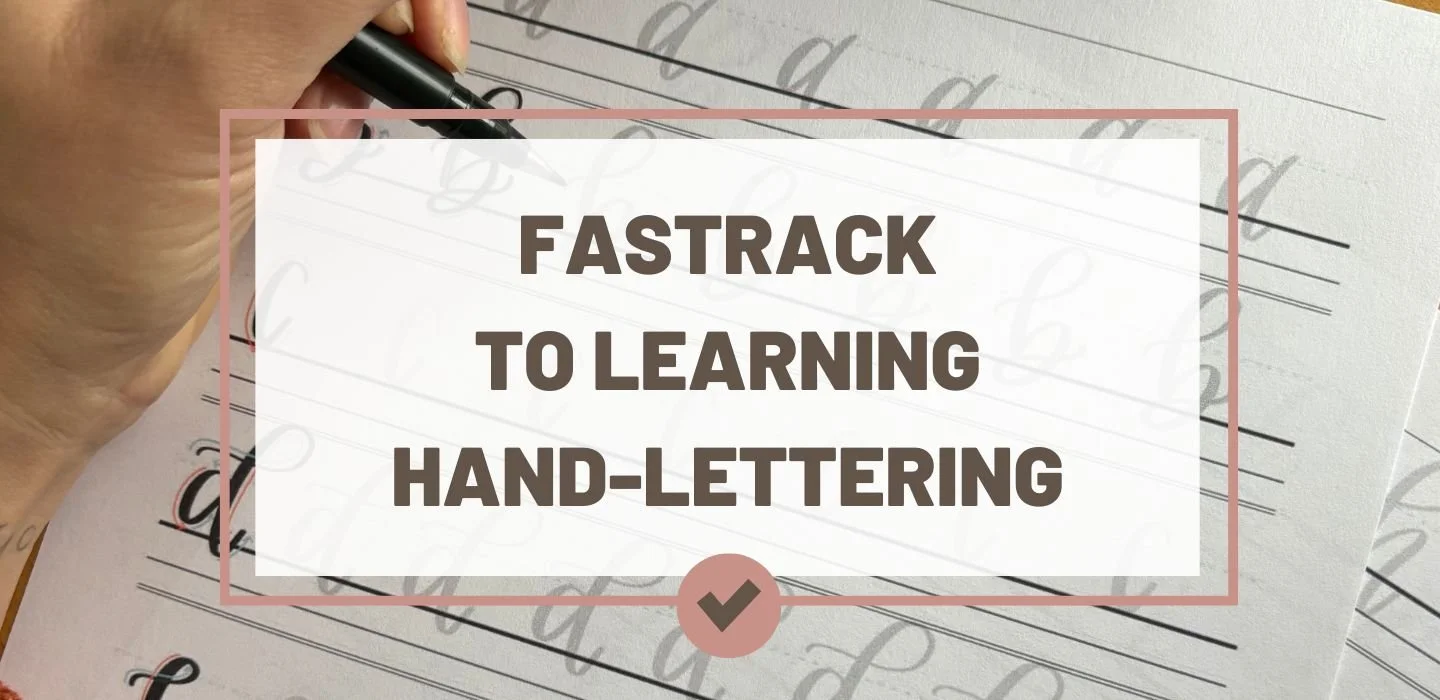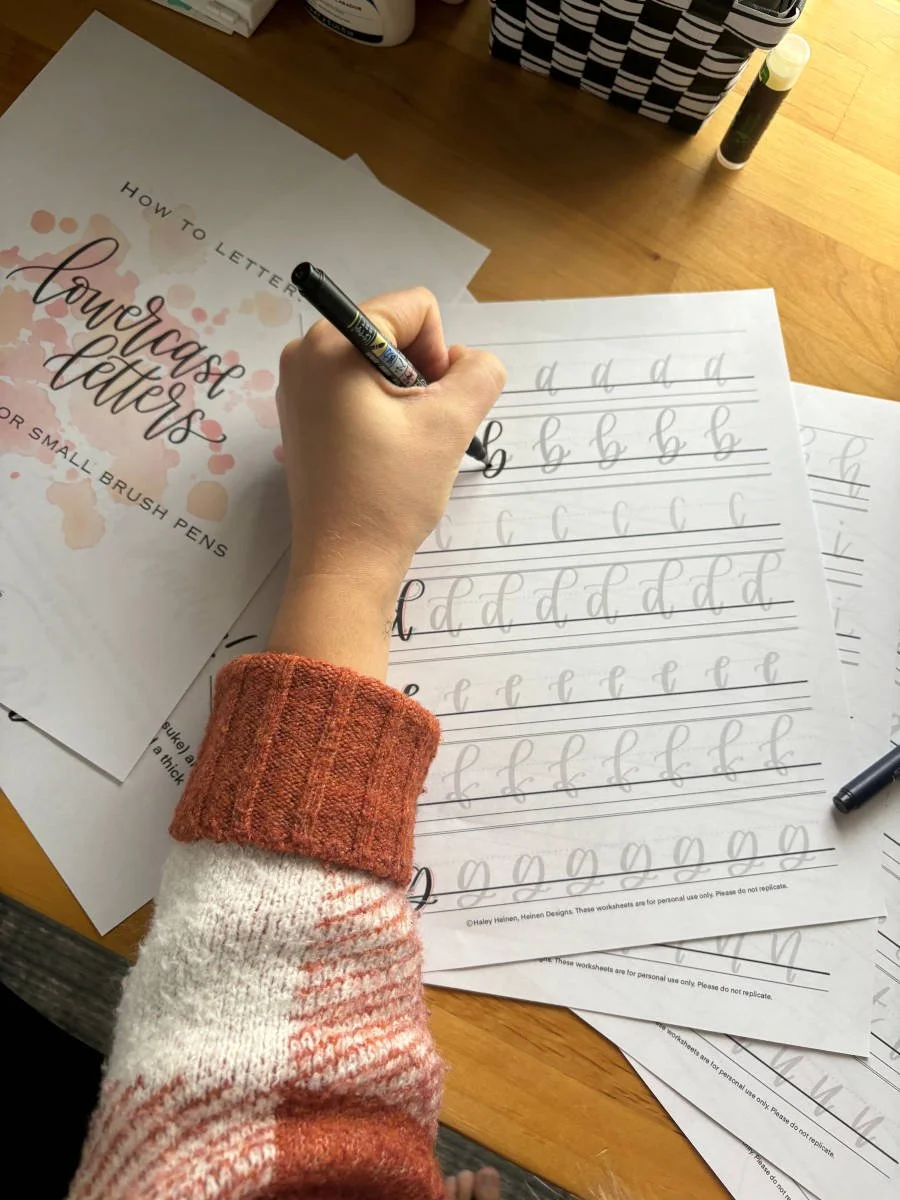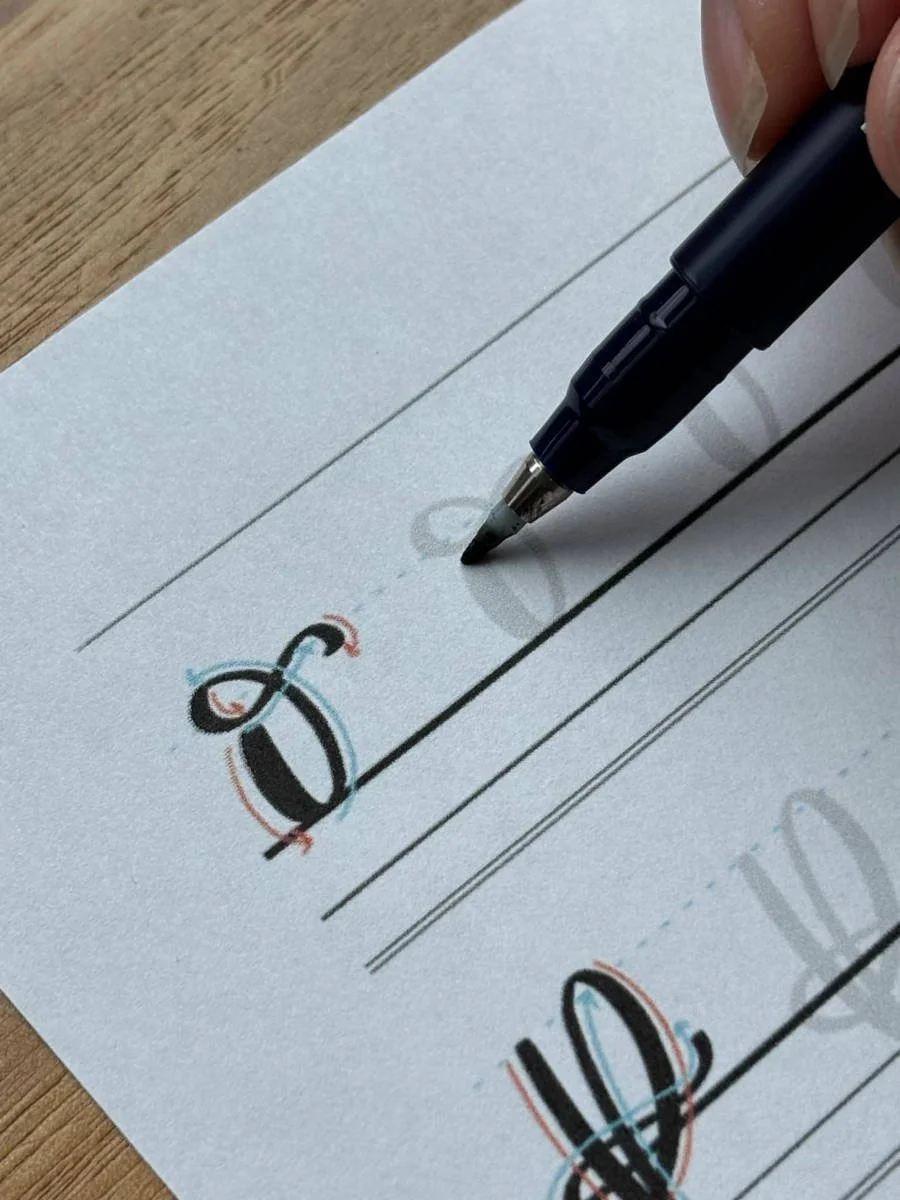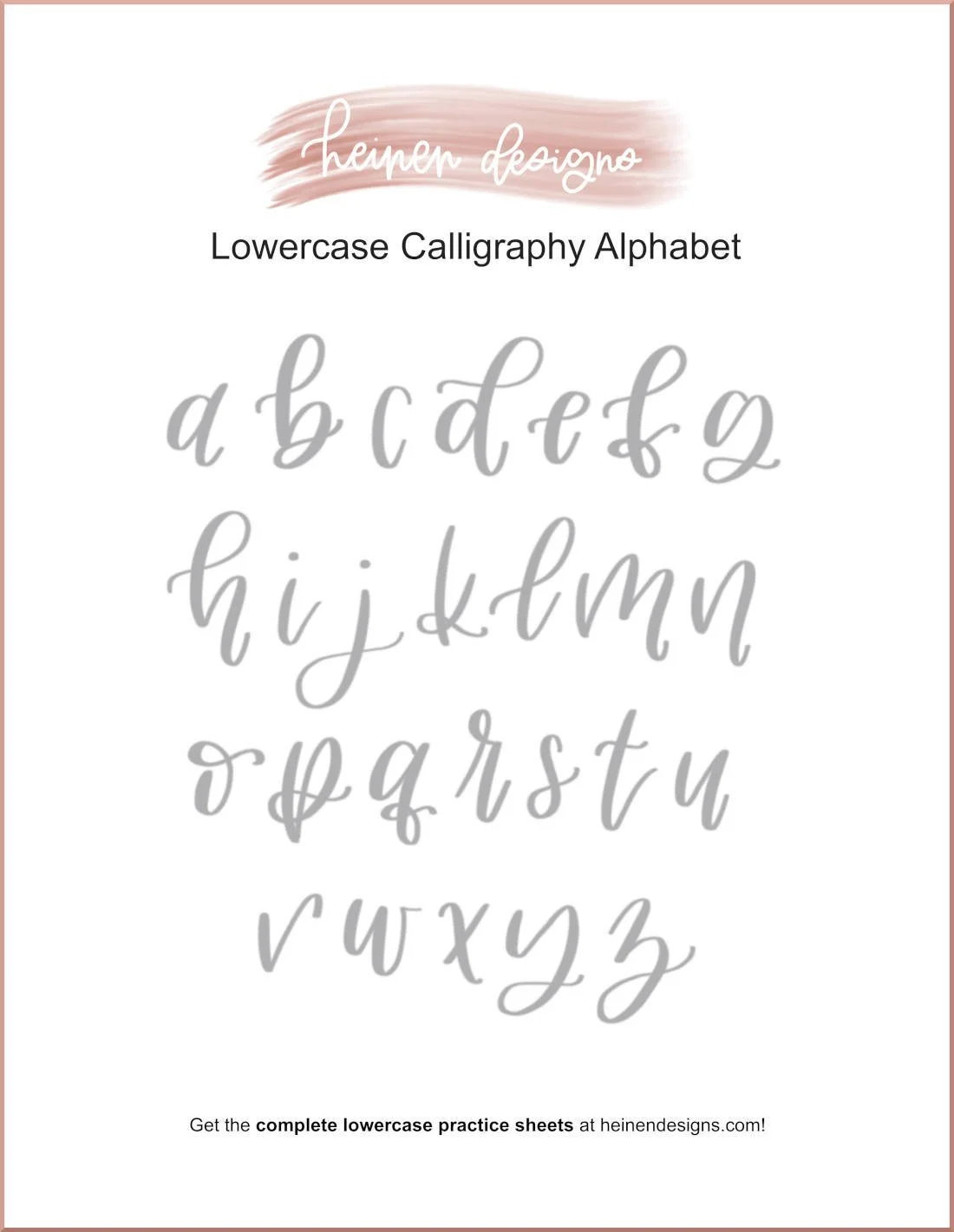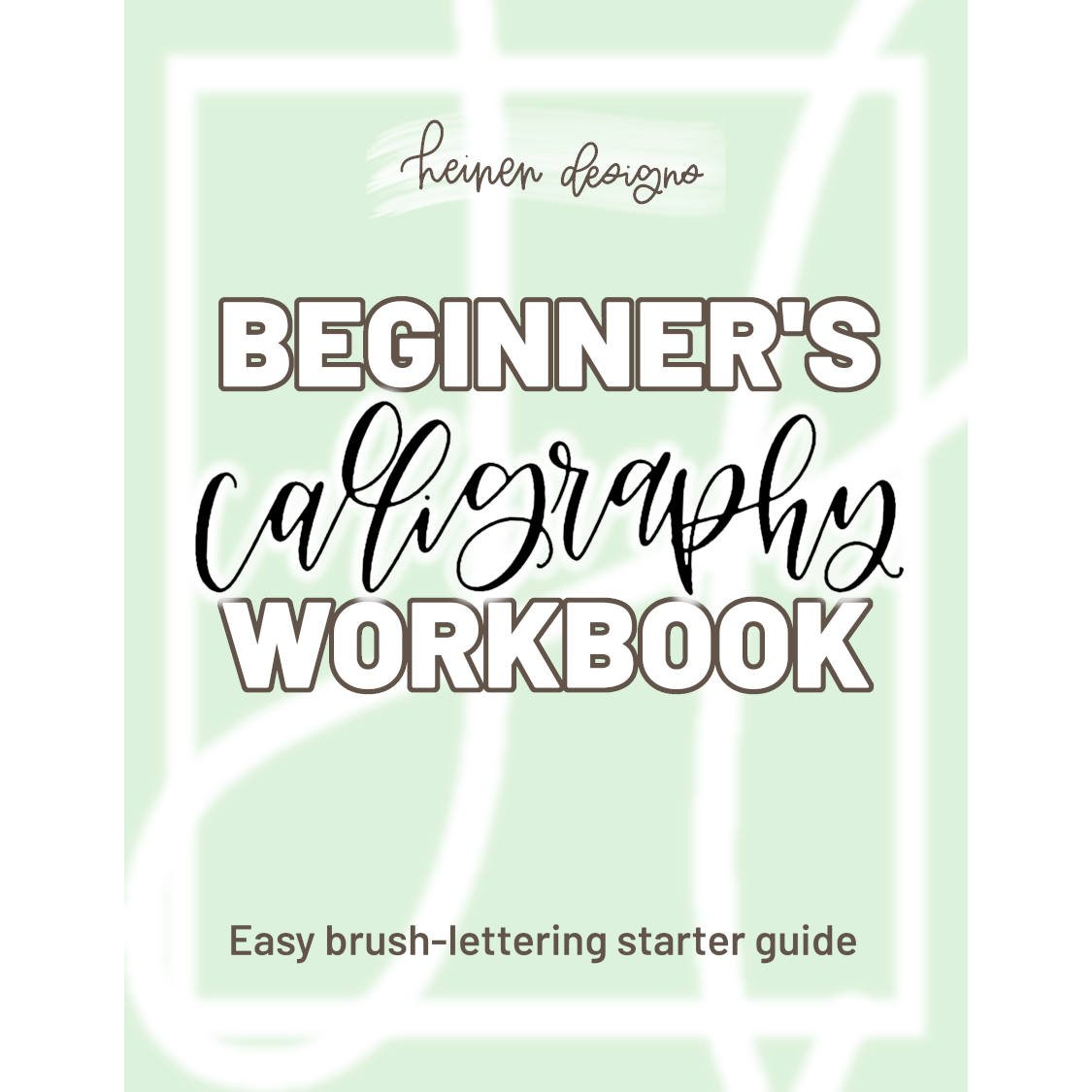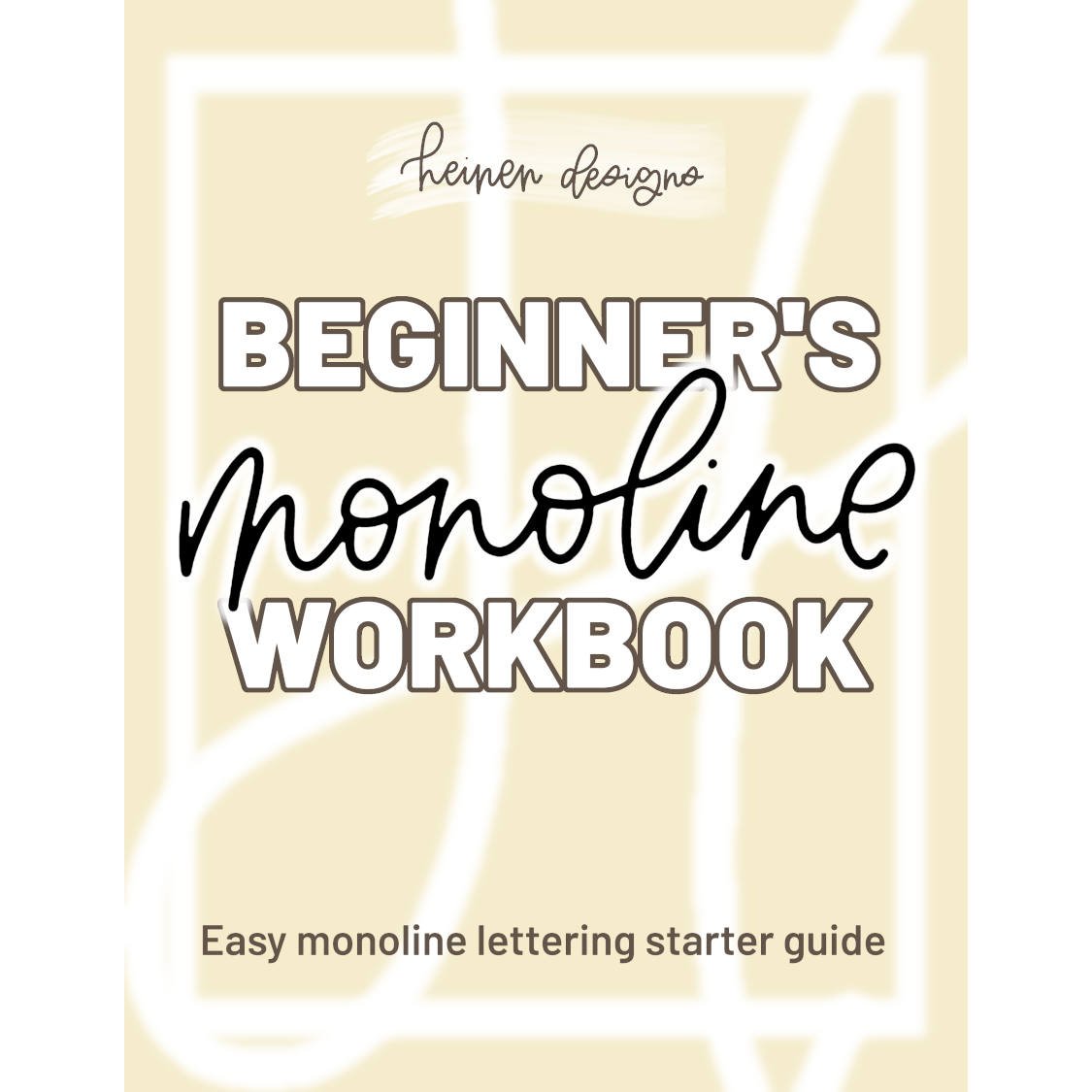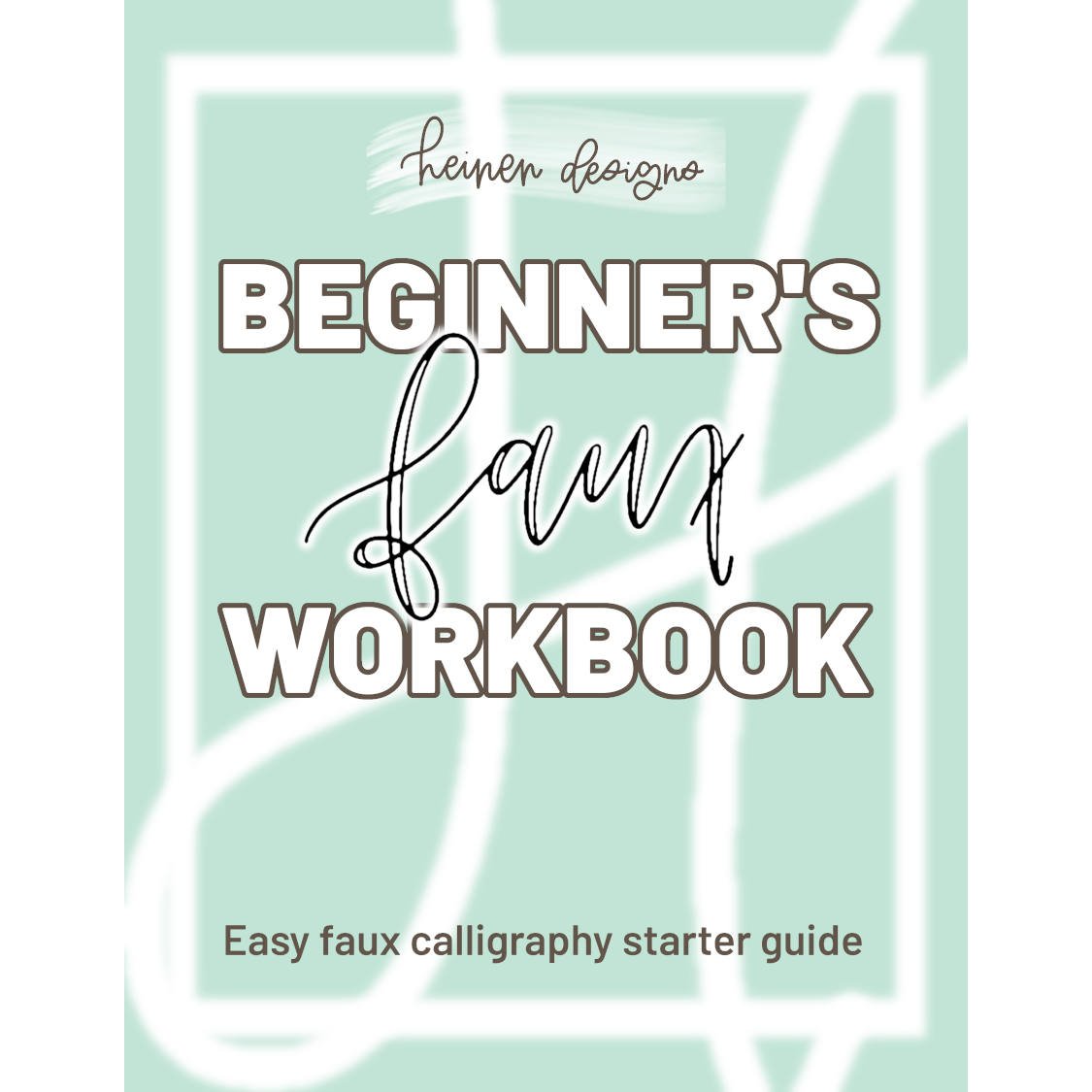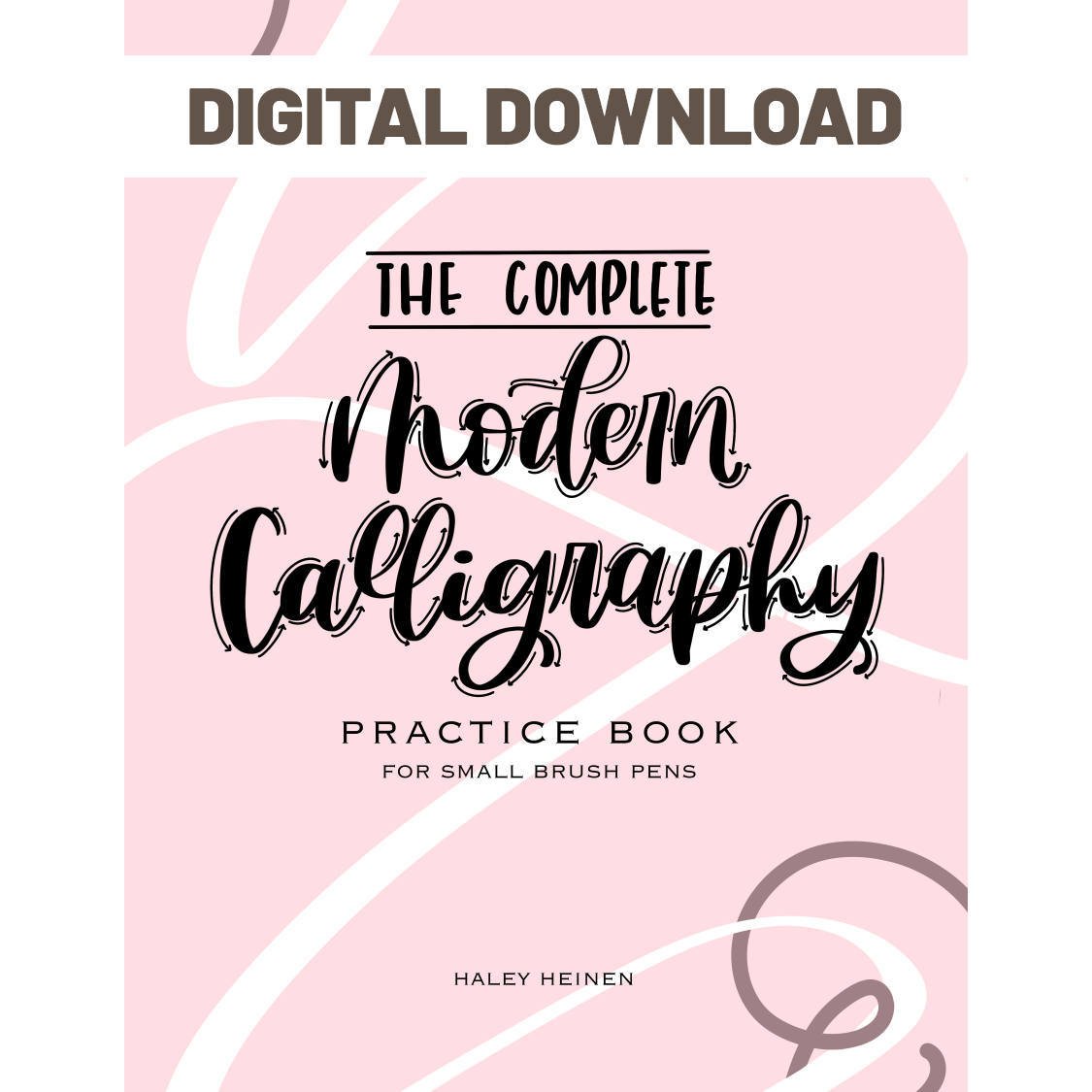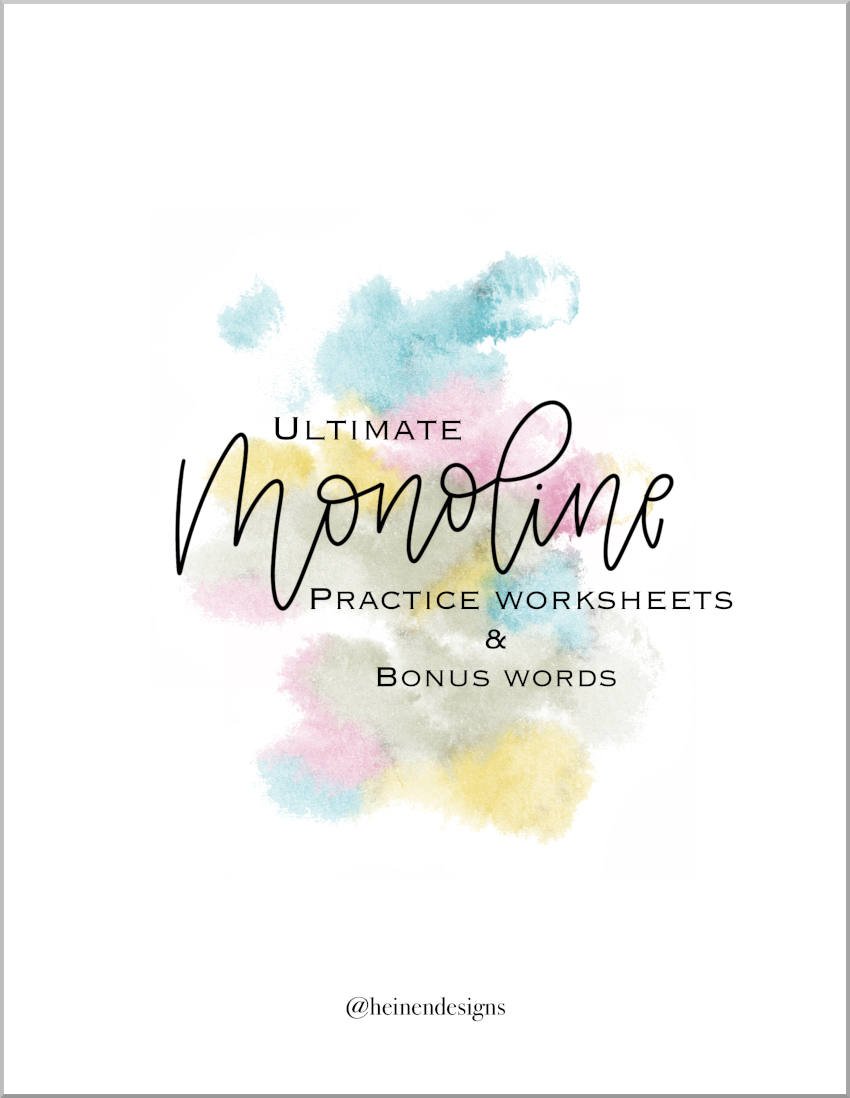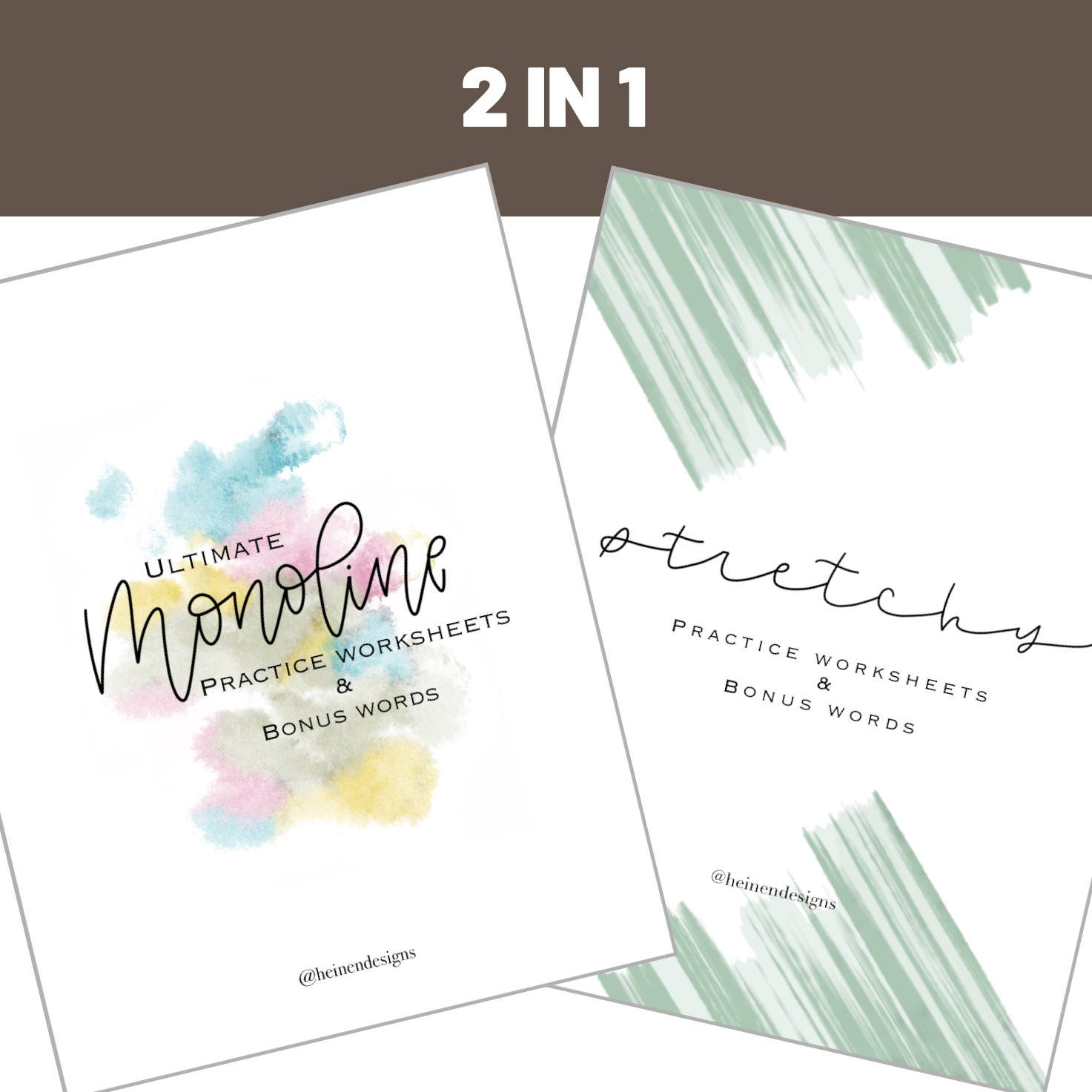How to Learn Hand-Lettering Fast: The Shortcut to Beautiful Letters
So, you want to learn hand-lettering — and you want to learn it fast.
Maybe you’ve seen beautiful script on Instagram or Pinterest, or you’ve always wanted to try calligraphy but never knew where to start. You don’t have hours a day to dedicate to learning, and you don’t want to waste time on random YouTube videos that leave you more confused than inspired.
The good news? You don’t need months of practice or natural “artistic” talent to see real results.
What you do need is a smart, focused path, and that’s exactly what you’ll find in this guide.
Let’s break down the fastest and most efficient way to learn hand-lettering so you can start creating beautiful letters today.
Tap to jump to a topic:
Don’t forget to grab your FREE download before you go!
Start by Choosing ONE Style
One of the biggest mistakes beginners make is trying to learn everything at once — brush lettering, faux calligraphy, monoline, not to mention digital versus real pen and ink, and more.
Here’s the truth: Trying to learn too many styles too soon will slow you down.
If your goal is speed, you need focus. And the best place to start?
Modern Brush Lettering: The Foundational Hand-Lettering Font
Modern brush lettering is one of the most accessible, flexible, and beginner-friendly styles of hand-lettering out there. It’s expressive, playful, and doesn't follow the rigid rules of traditional calligraphy, making it perfect for fast learners who want beautiful results without having to master a historical script first.
Why brush lettering?
It's beginner-friendly
It doesn't require dip pens or ink pots
You can practice anywhere with a simple brush pen and paper
Whether you’re lettering for fun, for Instagram, or for a future business, brush lettering gives you a fast and flexible foundation that you can build on. You’ll learn key concepts like stroke control, letterforms, spacing, and rhythm — all of which transfer to other styles later.
So before you go chasing every tool and tutorial out there, start with one style, and let it be brush lettering. It’s the perfect balance of structure and freedom, and the quickest way to start creating letterforms you’re proud of.
Use the Right Tools from the Start
Learning quickly means removing friction, and that starts with your tools.
If your pen is fraying, your paper is bleeding, or your strokes feel stiff, you’ll spend more time frustrated than focused.
Here’s what we recommend for fast results:
Brush pen:
Tombow Fudenosuke (hard or soft tip)
Pentel Sign Pen with Brush Tip
Paper:
Rhodia Dot Pad or HP Premium 32lb Laser Paper
Avoid regular printer paper (it damages your pens and ruins ink flow). Keep it simple. Don’t overthink supplies. Fewer, better tools = faster progress. Learn more about pen types with our complete guide to calligraphy pens.
Master the Basic Strokes First
Every letter in brush calligraphy — uppercase and lowercase — is built from eight foundational strokes. Think of these like the alphabet’s building blocks.
The strokes include:
Upstroke
Downstroke
Overturn
Underturn
Compound curve
Oval
Ascending loop
Descending loop
If you skip these and jump right into writing quotes, your letters will look shaky, inconsistent, and unbalanced, no matter how artistic you are.
Want to learn fast? Start slow and stroke-focused.
This is where most people get impatient. But if you practice strokes consistently for just 10–15 minutes a day, you’ll develop muscle memory fast. That’s the real secret.
Practice with Purpose (Not Just Pretty Words)
If you want to learn hand-lettering fast, what you practice is just as important as how you practice.
One of the most common traps beginners fall into is trying to write full quotes or song lyrics too soon. It’s tempting — after all, those are the pieces you see all over Instagram — but jumping straight to complex compositions without a foundation is like trying to write a novel before learning the alphabet.
The truth? Practicing “pretty words” without structure leads to slow (and frustrating) progress.
So what should you do instead? Practice with purpose.
Here’s what that looks like:
1. Start with Basic Strokes
These are the fundamental movements that make up every letter in brush calligraphy. Think of them as your visual alphabet. The muscle memory you build here sets the stage for everything else.
Practice rows of upstrokes, downstrokes, underturns, compound curves, and ovals.
Don’t rush. Focus on even spacing, smooth transitions, and consistent pressure.
5–10 minutes a day on strokes can drastically improve control.
2. Move on to Individual Letters
Once your strokes feel more natural, start forming lowercase letters. This helps you understand how strokes connect, overlap, and create rhythm.
Practice one letter at a time. Start with “a” through “z,” focusing on shape and spacing.
Use traceable worksheets to speed up muscle memory. You’ll hear us say that a lot, because it works!
Keep letterforms simple and consistent.
3. Practice Connecting Letters
This is where things start to feel real, and where most beginners hit a wall. Transitioning smoothly between letters is its own skill, so take time to build it.
Start with easy combos like “ab,” “an,” “at,” and “al.”
Work up to small, simple words like “hello,” “love,” or “moon.”
Pay attention to spacing between letters and the angle of your entry / exit strokes.
The Key: Focused, Consistent Sessions
You don’t need marathon practice sessions to make progress fast.
15–30 minutes a day of structured practice is far more effective than one long session each week.
Keep your practice focused. Pick one skill per session (e.g., strokes, “m” connections, spacing).
Track your progress with date-stamped practice sheets to stay motivated.
Hand-lettering is equal parts art and muscle memory. By practicing with intention — not just repetition — you’ll learn faster, avoid burnout, and build a stronger foundation that pays off in every letter you write.
Traceable Worksheets Are the Fastest Way to Learn
Now for the real game-changer:
Traceable hand-lettering worksheets are the fastest way to build confidence, consistency, and control.
Here’s why they work:
They guide your hand — you learn correct form by repetition
They remove the guesswork — no more wondering “Am I doing this right?”
They build muscle memory faster than freehanding letters from scratch
Think of traceables like training wheels: they get you moving smoothly, safely, and faster than trying to figure it out alone.
Even professional letterers still use tracing drills to warm up their strokes before big projects. So if you’re serious about learning quickly, don’t skip this shortcut.
Ready to start?
Download our Beginner Hand-Lettering Worksheets to fast-track your progress today.
What NOT to Do If You Want to Learn Fast
To save you even more time, here are some beginner traps to avoid:
Don’t buy a dozen pens before mastering one
Don’t skip the basics to jump into full quotes
Don’t spend hours watching tutorials without practicing
Don’t compare your day 1 to someone else’s year 5
Instead, focus on structured, daily progress with the right tools and a proven path.
The Fastest Formula for Hand-Lettering Success
Let’s recap the shortcut:
One beginner brush pen
Smooth, bleed-proof paper
Daily practice with basic strokes and letters
Traceable worksheets to guide your learning
Focus over perfection
That’s it. Simple, doable, and incredibly effective.
Start Seeing Progress Today
If you want to learn hand-lettering quickly, you don’t need a fancy course, expensive supplies, or months of free time. You just need the right structure and the willingness to start small and stay consistent.
The best part? You can start right now.
Download your free traceable lowercase worksheet below, and practice your first strokes today.
In just 15 minutes, you’ll feel more confident and be one step closer to beautiful, flowing letters. No guesswork. Just guided, effective practice.


